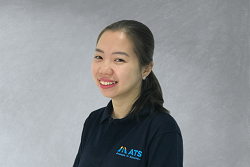Why United States
1. NỀN GIÁO DỤC HÀNG ĐẦU THẾ GIỚI
- Điểm đến số 1 của du học sinh quốc tế với số lượng trường đại học khổng lồ
- Hệ thống giáo dục Đại học chất lượng với 5/10 trường Đại học hàng đầu thế giới nằm ở Mỹ.
- Ngoài kiến thức và kỹ năng, sự tự tin và trưởng thành của sinh viên trong môi trường sống, học tập và làm việc giàu tính cạnh tranh ở Mỹ luôn được công nhận và đánh giá cao bởi các nhà tuyển dụng quốc tế.
2. CHƯƠNG TRÌNH LINH HOẠT, THỰC TẬP ĐA DẠNG
- Hệ thống giáo dục Đại học và sau Đại học của Mỹ rất linh hoạt, cho phép sinh viên lựa chọn nhiều khóa học trong cùng một chuyên ngành, tạo cơ hội cho sinh viên chuyển ngành hoặc theo học các chương trình đa chuyên ngành. Sinh viên được tạo điều kiện đi thực tập (internship) trong thời gian học hoặc nghỉ hè để tích lũy kinh nghiệm thực tế.
3. ĐẤT NƯỚC CỦA SỰ ĐA DẠNG VÀ HÒA NHẬP
- Là một hợp chủng quốc của hơn 300 triệu dân đến từ nhiều nền văn hóa và vùng lãnh thổ, với những lối sống và đức tin khác nhau, nước Mỹ là mảnh đất lý tưởng để bạn khám phá thế giới.
- Nhờ diện tích rộng lớn và số lượng trường khổng lồ, mỗi du học sinh đều có thể tìm thấy một ngôi trường phù hợp với mình. Từ các trường đại học rộng lớn với diện tích bằng cả một thành phố đến những ngôi trường nhỏ kín đáo nằm rải rác. Từ những đô thị sầm uất như Las Vegas, Manhattan... đến những thị trấn yên bình, các hòn đảo nhiệt đới, sa mạc khô cằn, đồng bằng phủ tuyết,... Ở Mỹ, sẽ luôn có một nơi nào đó dành cho bạn.
4. CƠ HỘI VIỆC LÀM
- Du học sinh được phép làm việc bán thời gian trong khuôn viên trường tối đa 20 giờ/tuần trong kỳ học và 40 giờ/tuần trong kỳ nghỉ. Các công việc ngoài trường phải liên quan đến chuyên ngành học với sự cho phép của nhân viên nhà trường, trong những điều kiện nhất định với các hạn chế do Cơ quan Di trú Mỹ ban hành.
- Sinh viên có cơ hội ở lại làm việc thêm một năm sau tốt nghiệp với chương trình thực tập không bắt buộc (OPT)
Living in United States
Student life in the United States
Student life in the United States is an incredibly unique experience, especially when compared to the experience that you may get in a country like the United Kingdom or Canada. This is likely due to the fact that many students who obtain a secondary school education in the United States end up going on to university, and it is considered a part of the process of “growing up” in American culture.
The independence and adventure associated with going to university is going to rub off on you, even if you are an international student in the United States.
1. Basic living cost
|
Item |
Monthly Costs |
|
Accommodation |
$200 |
|
Electricity |
$20 |
|
Groceries (home cooked meals) |
$150 |
|
International Calling cards |
$15 |
|
Home Internet |
$15 |
|
Cell phone |
$50 |
|
Restaurant meals |
$75 |
|
Entertainment |
$100 |
|
Car Insurance |
$100 |
|
Petrol for car |
$75 |
|
Weekend activities |
$100 |
|
Shopping |
$100 |
|
Total |
$1000 |
2. Take Advantage of This Time in Your Life
One of the best pieces of advice that we have for any college student is that, no matter whether you decide to go to the United States or another country to study or not, make sure that you get involved. Enjoy every opportunity that you have available at your university, even outside of your field of study. When studying abroad, it’s important to take advantage of everything because you may never have those opportunities again.
The United States is a very diverse country and there is a lot to see and enjoy while you are there. Make connections and see if you can find places that are off the beaten path and learn more about the area that you reside in. Just get involved and do everything that you can.
3. Residence Life
Unlike most international universities, many colleges and universities in the United States offer on-campus housing that is not in the middle of a town. Most college campuses in the United States are their own separate areas of a town, and they have dormitories that their undergraduate (and sometimes graduate) students can reside in. These dormitories become small communities, where you can meet other people who attend the university and enjoy particular activities with the people in your residence hall.
4. Weekend Fun
So, you’ve hit the weekend and you’ve got some free time. What do you do? Many college towns have a lively nightlife, with bars and clubs that you can enjoy. Unlike most countries, the drinking age in the United States is 21 years of age, so even though you may be able to drink when in your home country, you cannot in the United States unless you are 21. This may limit your involvement in the night life, but there are plenty of other activities to enjoy.
Many restaurants and pubs in college areas are open until late in the evening on the weekends, so you can go get a bite to eat with some friends if you wish.
There are also a number of live events that occur on the weekends across college campuses and in college towns. Make sure to check out the websites for the area that you live in; you may be able to find fun festivals and other activities to check out during the year. Most states have a state fair that you may be able to check out as well. The activities may also change with the seasons; if you are in the northeast, you can ski in the winter, go to festivals in the spring, enjoy outdoor sports in the summer and go to the fair in the fall. In the south, you can enjoy beaches year round. The activities available to you are highly dependent on the region you live in and what time of year it is.
Education System United States
The Higher Education system in the US (Higher Education) has many interesting points that you should consider when you consider studying in the US.
1. Public colleges and universities
State colleges and universities are supported and run by local or state governments. Each of the 50 states in the US has at least one state university and many state colleges. Many of these public universities have state names, or the word "state" in their school names: for example, Washington State University and the University of Michigan.
2. Private College or University
These schools are privately operated instead of state government agencies. Tuition fees for private schools are usually higher than those for public schools. Usually, private schools will be smaller than public schools.
Colleges and universities affiliated with religion are private universities. Typically these universities will accept students from all different religions. However, there are a few schools that want to admit students who share the same religion as the school.
3. Community College
Two-year community college offering associate's degree (transferable) and certificates. There are many types of associate degrees, but the most important difference is whether or not that degree is transferable. There are usually two main types of diploma: one for university transfer and the other for certification to help students get started. University transfer diplomas are usually associate's degrees in arts or associate's degrees in science. The degree that is not transferable is the associate of applied sciences and the certificate of completion of the program.
Most community college graduates transition to a four-year college or university. Because students can transfer points from a community college, students can complete a bachelor's degree within the next two years or more. Many schools also have an English program or intensive English program to help students prepare for college.
If students do not plan to go to university, they can find jobs in Vietnam with associate degree of the university.
4. Technology Institute
The Academy of Technology is a four-year university specializing in science and technology. Some schools have graduate programs or short-term training courses.
Institutes United States
Visa
What is an F1 visa?
An F1 visa is a nonimmigrant visa for those wishing to study in the U.S. You must file an F1 visa application if you plan on entering the US to attend a university or college, high school, private elementary school, seminary, conservatory, language training program, or other academic institution.
How Do You Get an F1 Visa?
The F1 visa process is relatively simple but can be time consuming, so it’s important to start this process as soon as possible to ensure that any delays won’t affect your education. Perhaps one of the lengthiest steps towards becoming an international student can be applying to a US school that has been approved by the Student and Exchange Visitor Program (SEVP). It’s also important to keep in mind that while there are many great institutions across the country, not all are equipped to handle international students and the administration that is required, so it’s important to verify that the school you would like to attend is approved well before filling out any applications, writing any essays or providing references.
After receiving acceptance by the school of your choice, you will be officially enrolled into the SEVP and are required to pay a one-time application fee. After all fees are paid and your account is in good standing, what is called an “I-20” form will be provided by your institution or educational program. This form will allow you to schedule an interview appointment with a local US embassy or consulate to be granted an F1 visa and officially become an international student!
F1 Visa Qualifications
Specific instructions for how to apply for your F1 visa will be listed on the website of the US embassy or consulate that you plan on visiting, but regardless of where your visa appointment may take place you will need to provide the same kind of documents and address the same kinds of questions.
In order to qualify and as part of the F1 visa interview process, potential international students will need to prove the following:
- Official Residency in a Foreign Country and Intentions to Return Home
Upon graduation it’s imperative that the international student plans on returning back to their home country. If an interviewer can tell that your intentions are to become a permanent resident of the United States, your visa will more than likely be denied. The intention a student visas is to further educate yourself and then bring your newfound knowledge back to your country of citizenship, not to remain in the US. - Admission to an Approved School
During your interview it is also imperative that you can prove acceptance by a US institution or language school previously approved by the SEVP. - Sufficient Financial Support
F1 visa holders must be equipped to cover their living and study expenses while in the US, as legal employment opportunities will be limited. - Ties to Your Home Country
Another important part of an F1 visa interview is proving strong ties to your home country, including family, job offers, bank accounts or other assets.
Working on an F1 Visa
It’s essential to remember that F1 visas are intended for full-time students and are not designed as work visas. With this in mind, international students are typically able to work 20 hours a week on campus when school is in session and full-time while school is in recess, but you may need to seek approval from the Department of Homeland Security and the International Office at your school first. Working illegally while on an F1 visa is a serious violation of the regulations, and could result in deportation.
Additionally, F1 visa holders are eligible to apply for permission to work off campus for up to 12 months. This permission is called Optional Practical Training (OPT) and allows F1 students to train, and thus work, in a field that is related to their field of study. For more information, be sure to contact an international student advisor at your school, but OPT is traditionally used in the following situations:
- part-time work during the F-1 student’s studies,
- full-time work during periods of recess, or
- after graduation in a field related to the program of study.
Transferring Schools with an F1 Visa
Students on an F1 visa are required to study at the academic institution through which their visa application was filed and granted. However, in some situations international students are able to transfer institutions if the student completes or leaves their current program with confirmed plans to study at a different US institution the following academic semester.
Returning Home
Students are not required to immediately return home upon completion of their program on an F1 visa. Instead, F-1 visa holders can remain in the US for up to 60 days after completing their academic program or OPT training. Any students wishing to remain in the States after their program must change their visa status, re-enroll in a higher program, or have the option to transfer to a new school and receive new visa documents.
























